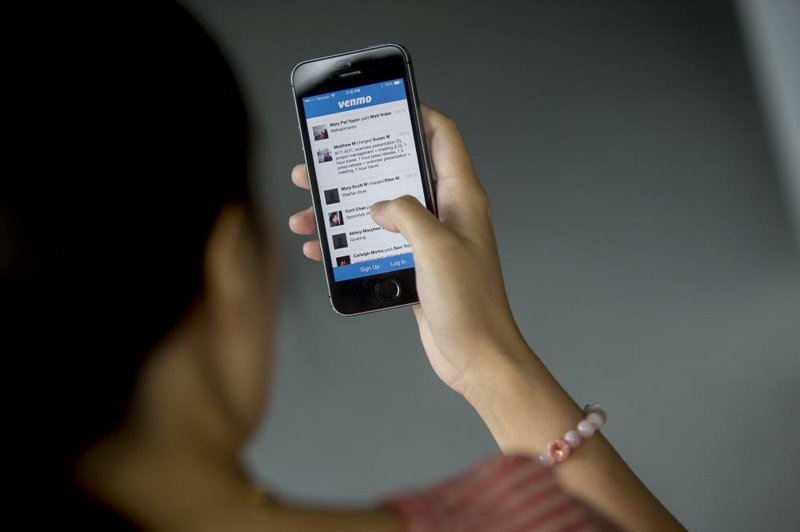NEW YORK -- First, they ditched land telephone lines. Then they cut the cable-TV cord. Now, millennials are chucking their checkbooks and cash.
Take Sanket Karuri, 23, who calls himself the "friend who never has cash at those cash-only places."
Instead, he uses his smartphone to split restaurant checks and pay rent, using eBay's mobile-payment tool called Venmo. Like many of his peers, he's taken to using the application's name as a verb -- telling friends to "Venmo me" -- the way predecessors turned "google" and "tweet" into action words.
Millennials, people born from the early 1980s to the early 2000s, have been flocking to these technologies, drawn by their ease of use and social features. Venmo, based in New York, alone handled $314 million in mobile payments in the first quarter of this year, up 62 percent from the prior quarter. Another tool gaining in popularity is Fiserv's Popmoney.
After downloading a mobile-payment app onto a smartphone, users can connect them to bank and credit-card accounts, and then link up with friends to send and receive money on the go.
The broader mobile-wallet market, which in recent years drew entrants such as Google, initially was slow to catch on with a wide audience. The rising use of peer-to-peer applications among 20-somethings is improving the prospects for adoption of all kinds of smartphone-based payments.
"I couldn't have predicted then just how much it would infiltrate my financial life as it has, but now I live and die by it," said Karuri, who uses the application to pay peers for everything from rent to drinks. "Especially in New York, you're mostly going out with lots of friends, and there's a lot of splitting bills -- Venmo has taken over that game."
Online and mobile peer-to-peer transfers can be used anytime when people previously might have written a check or handed out cash, such as for rent, utilities or bills for dining out. About half of peer-to-peer payment users use the apps to split restaurant checks, according to a July Nielsen report. Gifts and entertainment, such as paying each other for concert tickets, are also popular.
Individuals exchange about $1 trillion in the United States every year, said Ron Shevlin, a senior analyst at Aite Group, a research and advisory firm. While mobile and electronic peer-to-peer applications won't be able to capture the entire market, they have made gains and will "make a dent," he said.
The apps are free to download, and most levy modest fees for transactions. Some charge for sending money through a credit or debit card. Others might charge for sending, though not for receiving.
Dwolla, a peer-to-peer payment network startup, takes 25 cents from those receiving more than $10, while Venmo users who send money through a credit card get docked 3 percent. Individual banks that team up with Popmoney are charged by Fiserv for transactions, and some pass the cost to consumers.
Millennials already spend $1.3 trillion as consumers annually, according to a January report by Boston Consulting Group. They're also already the biggest users of all mobile- payment apps, with 18-to-34-year-olds accounting for about 55 percent of those who use the digital services, Nielsen found.
"The early adopters grew up with mobile social media," said Bill Ready, chief executive officer of Venmo and Braintree Payment Solutions.
The increasing interest has spurred payments companies and financial institutions to roll out apps through acquisitions and partnerships. Braintree, itself acquired by EBay for $800 million last year, bought Venmo in 2012 for $26.2 million to break into the peer-to-peer payments space.
Startup Square purchased payments application Evenly for an undisclosed price in December 2013 -- months after rolling out its own person-to-person service, Square Cash.
The services are growing rapidly. The total volume of mobile and online peer-to-peer payments through financial institutions and nonbank providers such as PayPal -- also owned by EBay -- reached $74.9 billion in 2013 and is projected to increase significantly, according to Javelin Strategy & Research.
In April, eBay CEO John Donahoe cited Venmo's "explosive growth on college campuses" in the payments business and said that while it has no revenue, the app serves as a way to extend the reach of PayPal, which pioneered online peer-to-peer payments more than 15 years ago, and shows the "power of mobile payments." The current focus is to increase users and seek to make money later, and the two products will eventually be merged, he said on a conference call.
No single provider dominates the market so far, as companies take on different roles in the space. Some are used for larger transactions such as bill payments, while others tout their services for smaller transfers, said Aleia Van Dyke, a payments analyst at Javelin.
Financial institutions that don't offer peer-to-peer services, such as through partnerships with app providers, risk losing younger customers, according to Javelin.
"They like the social aspect of the communication, and it also serves as a reminder to an individual who hasn't paid," said Ron Mazursky, director of the debit-advisory service at Mercator Advisory Group, which provides analysis for the payments and banking industries.
The power of community also helps explain increased millennial use of person-to-person payment services. College campuses, in particular, foster viral adoption of new technologies, said Kamran Ansari, an investor at Greycroft Partners who invested in both Venmo and Braintree.
Student Justin Schuster, 21, was converted to Venmo not of his own volition recently during a brunch with three friends. One of them wanted to put the entire check on his credit card for rewards points and insisted that everyone else pay their share through Venmo.
"This was the first time I'd ever had an incentive or need to use it," he said. "I ended up using it two more times in the same day."
SundayMonday Business on 08/25/2014
